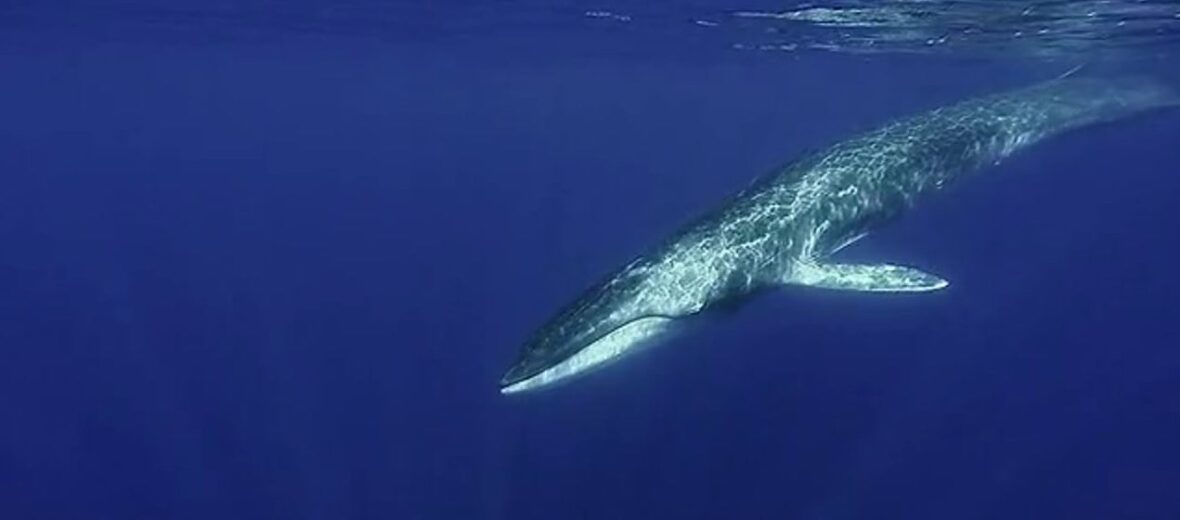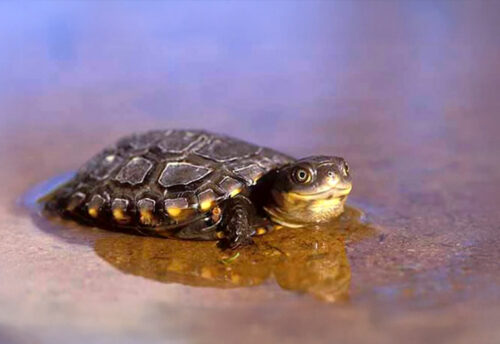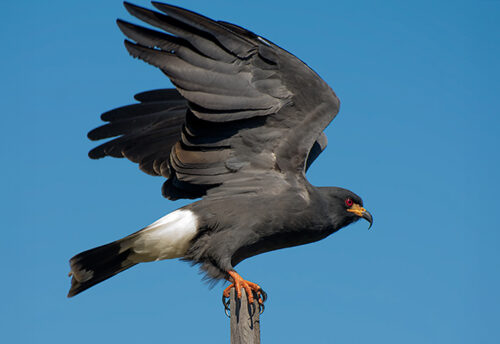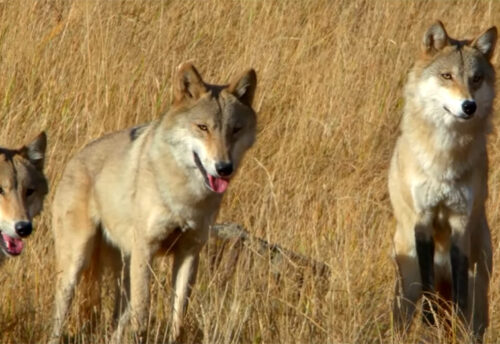
The fin whale is the second largest creature on the planet, after the blue whale. There are 2 known subspecies; the northern and the southern. Fin whales prefer temperate and polar waters. These gentle giants are part of the baleen family of whales that spend their days filter feeding tiny animals with their baleen plates and singing to each other. Sadly though these beautiful beasts are listed as Vulnerable by the IUCN. This is due to whaling, noise pollution, boat strike (being hit by ships in commercial shipping lanes), overfishing, and bycatch (being caught in fishing nets). However, there are an estimated 100,000+ still left to date and due to the bans on whaling their numbers are increasing.
First the Stats…
Scientific name: Balaenoptera physalus
Weight: 100,000 lbs.
Length: Up to 66 feet
Lifespan: Up to 90+ years
Now on to the Facts!
1.) Fin whales feed on fish, squid, and krill.
2.) Their only known predator is the orca. And they only attack juveniles.
3.) The fin whale can eat up to 2 tons of food per day!
4.) They can be found in every ocean, sans parts of the Arctic.
5.) Fin whales are unusual in that their lower right jaw is bright white and the lower left jaw is black.
But wait, there’s more on the fin whale!
6.) These giants can dive to depths of up to 1,800 feet.
7.) Holding their breath for up to 20 minutes is normal during deeper dives.
Did you know…?
The fin whale is one of the fastest whale species, reaching average speeds of 18 mph. They are capable of bursts of up to 30 mph! Impressive for a creature this large.
8.) Hybrids of blue whales and fin whales have been documented in the past, so these whales will interbreed at times.
9.) While typically solitary, they can congregate into pods of up to 7 individuals.
10.) They communicate via low pitched grunts and moans.
But wait, there’s still more on the fin whale!
11.) Fin whales seldom breach from the water.
12.) Mating and calving occurs from November – March. Females birth a calf every 3 years.
13.) Gestation (pregnancy) lasts up to 11 months and yields a single calf that measures up to 20 feet long at up to 3 tons in weight!
14.) Being baleen filter feeders, these gentle creatures circle their fish or krill balls to form a tighter mass and then swim upwards, with a gaping mouth, engulfing huge amounts of prey items. They then close their mouth and force the sea water out through their baleen plates, leaving the tasty food behind to swallow.
Now a Short Fin Whale Video!
Also, check out the Critter Science YouTube channel. Videos added frequently!
Want to suggest a critter for me to write about? Let me know here.



